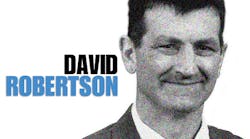As the digital revolution races along at full pace, one may wonder whether analog signal processing is becoming obsolete or if it has been relegated to a “pad driver” function. In fact, several important industry trends are expandingthe need for analog and mixed-signal circuits.
Innovative Sensors
One of the more visible trends across industries from consumer to healthcare to automotive is the proliferation of new sensors. A few years ago, the typical cell phone had one important sensor: the microphone. Today’s cell phones feature cameras, accelerometers, touchscreen sensors, proximity sensors, and more.
The number and variety of new sensors in modern cars is even more impressive, including gyroscopes for stability control, cameras and proximately detectors for parking assistance, oil quality sensors, and tire pressure sensors. Each sensor has special signal processing requirements, and new functions are being realized by combining the information from multiple sensors.
To complement this sensor proliferation, waves of new solid-state actuators are being introduced into these new signal chains.These actuators serve a variety of functions, including cell-phone camera lens control and analog switch device reconfiguration, for example, changing radio bands and bandwidths to accommodate different communications standards in multi-standard radio applications.
As with sensors, these actuator functions are becoming increasingly sophisticated, requiring advanced mixed-signal circuitry to drive them. As an additional challenge, many of these actuators require higher voltages, higher currents, or both, from their driver functions.
These sensors and actuators interface directly to the “real world,” so in many cases they may see harsh environmental conditions. We are placing our electronic gadgets in some interesting places, from human bodies to the automotive drive train. As a result, a great deal of innovation is required to ensure a robust and reliable solution is provided.
Design Challenges
Through all of this, we still see that the analog and mixed-signal domain frequently serves as the information gateway. The key challenge is getting more useful information into (and back out of) the digital domain.
The digital world has defied predictions of the “end of Moore’s law” and continued to advance the speed, power efficiency, and functional density of digital-signal processing. The digital world’s appetite for information is continuing to expand exponentially, and in many cases, the ultimate limit of the information that can be processed is determined by how much data the analog/mixed-signal circuitry can provide.
Classically, two very important dimensions of mixed-signal performance are sensitivity and selectivity. Sensitivity describes the system’s ability to extract information out of the “noise floor” that is inevitable in the real world. Selectivity describes the system’s ability to extract information in the presence of heavy traffic—other signals and interferers that in many cases may be much stronger than the signal you are looking for.
As the “signal processing world” becomes more crowded, selectivity considerations are increasingly driving design specifications. This means requirements for higher dynamic range in converters and more stringent linearity requirements for RF and linear signal-processing blocks. And, of course, all of this needs to be realized on an ever-decreasing power budget, consistent with smaller systems and, in many cases, battery power.
Technology advances and breakthroughs are helping the mixed-signal world meet these challenges. Moore’s law and the very-deep-submicron CMOS processes that make gigahertz digital-signal processing possible are also helping to enable the next wave of high-speed data converters and integrated radio transceivers.
However, these processes typically aren’t suitable for generating new sensors, actuators, or some of the precision mixed-signal and linear functions. These circuits, which exist in a dimension we call “more than Moore,” must take advantage of other types of process sophistication, including bipolar transistors, microelectromechanical systems (MEMS) structures, and new implementations of passive devices.
David (“Dave”) Robertsonis vice president of Analog Technology for Analog Devices.He holds 16 patents on converter and mixed signal circuits, has participated in two “best panel” International Solid State Circuits Conference evening panel sessions, and was co-author of the paper that received the IEEE Journal of Solid State Circuits 1997 Best Paper Award. He served on the Technical Program Committee for the International Solid States Circuits Conference (ISSCC) from 2000 to 2008 and has served as chair of the Analog and Data Converter subcommittees from 2002 through 2008. Robertson has authored numerous technical papers and award-winning presentations for venues such as the ISSCC and the VLSI Symposium. He has a BA and BE from Dartmouth College with dual majors in economics and electrical engineering. He can be reached at [email protected].
